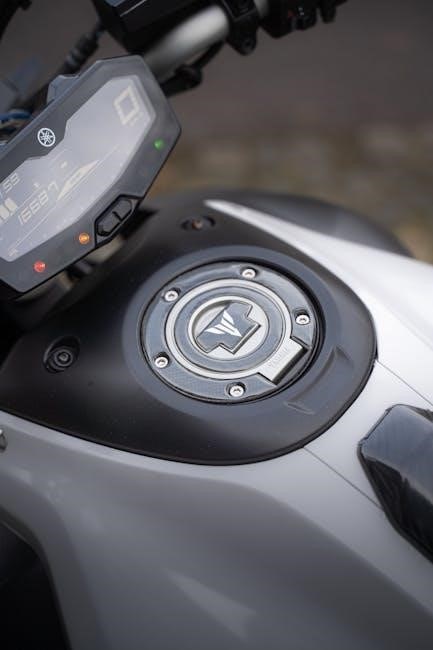Delta-Q Charger Manual: A Comprehensive Guide
Welcome to your comprehensive guide to Delta-Q chargers! This manual will offer an overview of Delta-Q charger models, safety protocols, operating guidelines, and maintenance tips․ Whether you’re a seasoned technician or new user, this resource offers valuable information․
Delta-Q Technologies specializes in high-performance battery charging solutions, primarily for electric vehicles and industrial equipment․ Renowned for their reliability and efficiency, Delta-Q chargers offer advanced charging algorithms that optimize battery life and performance․ These chargers are designed to be robust and withstand demanding environments, making them ideal for both on-board and off-board charging applications․
Delta-Q chargers are known for their ability to store multiple charging profiles, also called charge algorithms․ This allows users to select the appropriate profile for their specific battery type, ensuring optimal charging and preventing damage․ Their high-frequency power conversion technology results in energy savings compared to traditional ferro-resonant chargers, reducing electricity costs for users․ With sealed enclosures, Delta-Q chargers are protected from dirt, mud, dust, and water, ensuring reliable operation in harsh conditions․
This guide will provide you with the essential information needed to safely and effectively operate and maintain your Delta-Q charger․

Available Delta-Q Charger Models
Delta-Q Technologies offers a range of charger models tailored to various applications and power requirements․ The IC Series, including the IC650, IC900, and IC1200, is designed for industrial applications, providing robust and reliable charging for equipment like forklifts, scissor lifts, and floor cleaning machines․ These models offer different power outputs to suit various battery capacities and charging needs․
The QuiQ series is another popular line, known for its compact design and versatility․ QuiQ chargers are often used in smaller electric vehicles, such as golf carts and scooters․ The SC-48 model is specifically designed for E-Z-GO ELiTE vehicles․ Each model supports multiple charging algorithms to accommodate different battery chemistries, including lead-acid and lithium-ion․
Selecting the right Delta-Q charger model depends on factors such as battery voltage, capacity, and the specific application․ Consulting the product specifications and user manuals is crucial to ensure compatibility and optimal performance․ This section provides an overview to help you identify the appropriate charger for your needs․

Safety Instructions
This section outlines critical safety precautions for Delta-Q chargers․ It is essential to read and understand these instructions before operating or maintaining the charger to prevent personal injury or equipment damage․ Always prioritize safety․
General Safety Precautions
Before using your Delta-Q charger, carefully read this manual and understand all safety precautions․ Incorrect operation can lead to hazards․ Only use the charger for its intended purpose as outlined in this guide, ensuring proper ventilation around the unit during operation to prevent overheating․
Never operate a damaged charger․ Inspect the charger, cables, and connectors for wear or damage before each use․ If any damage is found, discontinue use immediately and contact a qualified technician for repair or replacement․ Do not attempt to disassemble or repair the charger yourself, as this could expose you to dangerous voltages and void the warranty․
Always disconnect the charger from the power source before performing any maintenance or cleaning․ Use a dry cloth to clean the exterior of the charger․ Avoid using liquids or solvents․ Ensure the charger is placed on a stable, non-flammable surface during operation․ Keep flammable materials away from the charger․
These precautions minimize risks associated with electrical equipment․
Battery Safety Information
Charging batteries involves inherent risks․ Always wear appropriate personal protective equipment (PPE), including safety glasses and gloves, when handling batteries․ Batteries contain corrosive substances that can cause severe burns․ In case of contact with battery acid, immediately flush the affected area with copious amounts of water and seek medical attention․
Ensure you are charging batteries in a well-ventilated area to prevent the accumulation of explosive gases, such as hydrogen, which can be produced during the charging process․ Never smoke or allow open flames near batteries being charged․ Use the Delta-Q charger only with battery types that are specifically approved for use with the charger․ Using an incompatible battery type can result in damage to the battery, the charger, or create a fire hazard․
Prior to charging, inspect the batteries for any signs of damage, such as cracks or leaks․ Do not charge damaged batteries․ Always follow the battery manufacturer’s instructions for proper charging procedures․ Overcharging or undercharging can significantly reduce battery life and pose a safety risk․
Adhering to these guidelines ensures a safe charging process․

Operating Instructions
This section details the proper operation of your Delta-Q charger․ It covers initial setup, selecting appropriate charging profiles for your battery type, and interpreting the charger’s indicator lights to understand charging status and potential issues during operation․
Initial Setup and Connections
Before using your Delta-Q charger, careful initial setup and secure connections are vital for safe and efficient operation․ First, unpack your Delta-Q charger and inspect it for any visible damage sustained during shipping․ Refer to the included documentation to verify all components are present․
Next, identify a suitable location for the charger․ Ensure the area is well-ventilated, dry, and protected from extreme temperatures․ The charger should be placed on a stable surface, away from flammable materials․ Consider proximity to both the battery being charged and a reliable power source․
Before making any connections, confirm the voltage of your battery matches the charger’s specified voltage range․ Then, connect the charger’s DC output cable to the battery terminals, ensuring correct polarity (positive to positive, negative to negative)․ Double-check these connections to prevent damage․ Finally, plug the charger into a grounded AC power outlet․ Observe the charger’s indicator lights to confirm it has initiated charging․ If any issues arise, consult the troubleshooting section of this manual․
Selecting the Correct Charging Profile
Choosing the correct charging profile is crucial for maximizing battery life and performance with your Delta-Q charger․ Delta-Q chargers offer multiple charging profiles, also known as charge algorithms, designed for different battery types (e․g․, flooded, AGM, gel) and chemistries․
Consult your battery manufacturer’s specifications to identify the recommended charging profile․ Using an incorrect profile can lead to undercharging, overcharging, or even damage to your battery․ Your Delta-Q charger may have a default profile pre-selected․
To select the correct profile, you might need to use the Delta-Q programming software or a compatible programmer․ Refer to the software’s user manual for detailed instructions on how to connect to the charger and navigate the profile selection menu․ Ensure that the selected profile aligns with the battery’s voltage, capacity, and chemistry․
After selecting the appropriate profile, verify your selection to prevent errors․ Using the charger with a wrong profile can compromise the battery’s health and overall charging efficiency․
Understanding Charging Indicators
Delta-Q chargers use a combination of LED lights and display messages to communicate the charging status․ Recognizing these indicators is key to monitoring the charging process and identifying potential issues․ Typically, Delta-Q chargers use LED indicators to show charging stages, errors, and completed charges․
A solid green light may signify a fully charged battery, while a blinking green light could indicate the charging cycle is in the final stage․ A solid yellow or amber light might mean the charger is in the bulk charging stage, delivering the maximum current to the battery․ A red light often indicates an error or fault, requiring immediate attention․
Consult the user manual for your specific Delta-Q charger model to understand the exact meaning of each indicator․ Some chargers may also feature a display screen providing detailed information about voltage, current, and charging time․
If you observe an unusual indicator, such as a flashing red light, consult the troubleshooting section of your manual to diagnose the issue․ It is important to address any error codes promptly to ensure the continued safe and efficient operation of your charger․

Maintenance and Troubleshooting
This section provides guidance on maintaining your Delta-Q charger for optimal performance and troubleshooting common problems․ Regular maintenance and prompt issue resolution will extend the charger’s lifespan and guarantee reliable battery charging․ Always refer to the user manual for specific instructions․
Routine Maintenance Procedures
Maintaining your Delta-Q charger ensures its longevity and consistent performance․ Routine maintenance should be performed regularly to prevent issues and extend the charger’s lifespan․ Firstly, always disconnect the charger from the power source before any maintenance․ Next, visually inspect the charger for any physical damage such as cracks, frayed cables, or loose connections․ Clean the charger’s exterior with a dry, soft cloth․ Avoid using liquids or solvents that could damage internal components․
Check the DC output cord and connectors for wear or corrosion; replace if necessary․ Ensure proper ventilation around the charger to prevent overheating․ Regularly inspect the fan, if equipped, and clear any dust or debris․ Periodically check the AC power cord and plug for damage․ Store the charger in a dry, clean environment when not in use․ If the charger is exposed to harsh conditions, increase the frequency of inspections and cleaning․ Following these routine maintenance procedures will help keep your Delta-Q charger operating efficiently and reliably for years to come․
Troubleshooting Common Issues
Encountering issues with your Delta-Q charger can be frustrating, but many problems can be resolved with simple troubleshooting steps․ If the charger fails to power on, first verify the AC power source is functioning correctly and the power cord is securely connected․ Check the input voltage to ensure it matches the charger’s specifications․ If the charger powers on but doesn’t initiate charging, ensure the battery is properly connected with correct polarity․
Verify that the selected charging profile is appropriate for the battery type․ If the charger displays an error code, consult the user manual for its meaning and recommended solutions․ Overheating can also cause charging interruptions; ensure adequate ventilation and check the fan for obstructions․ If the battery is not charging fully, inspect the battery’s condition and capacity; it may be nearing the end of its life․ For persistent problems, try resetting the charger by disconnecting it from both the power source and the battery for a few minutes before reconnecting․ If these steps don’t resolve the issue, consult a qualified technician or refer to the Delta-Q technical support resources for further assistance․
Accessing User Manuals and Technical Information
Gaining access to the correct user manuals and technical information is crucial for the proper operation and maintenance of your Delta-Q charger․ Delta-Q provides a comprehensive online resource center where you can find detailed documentation for all their charger models․ Start by visiting the official Delta-Q Technologies website and navigating to the “Support” or “Downloads” section․ Here, you’ll find a library of user manuals, specification sheets, application notes, and troubleshooting guides․
To locate the specific manual for your charger model, use the search function or browse by product series (IC Series, QuiQ Series, etc․)․ Manuals are typically available in PDF format for easy downloading and printing․ In addition to manuals, the resource center often includes FAQs, software downloads, and firmware updates․ For more in-depth technical support, you can also find contact information for Delta-Q’s customer service team․ They can provide assistance with complex issues, warranty claims, and specialized applications․ Regularly checking the Delta-Q website ensures you have the latest information and resources for your charger․
